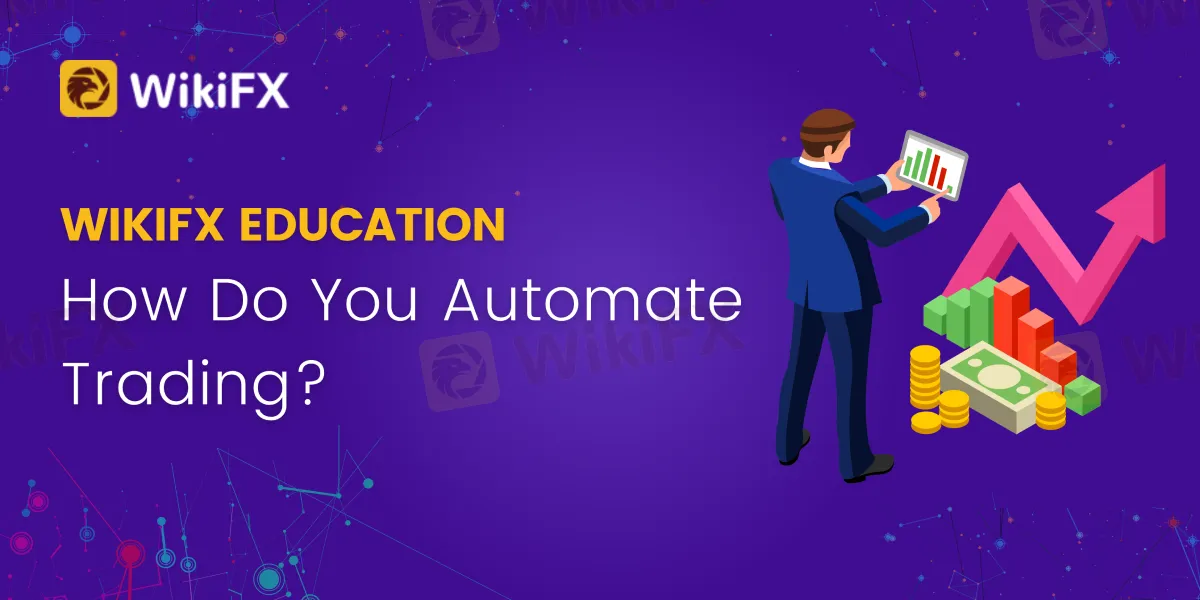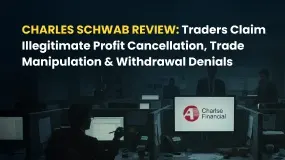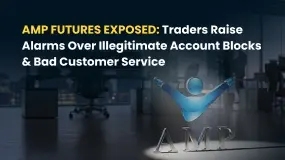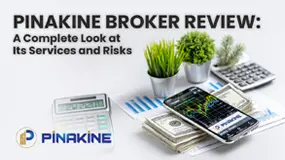简体中文
繁體中文
English
Pусский
日本語
ภาษาไทย
Tiếng Việt
Bahasa Indonesia
Español
हिन्दी
Filippiiniläinen
Français
Deutsch
Português
Türkçe
한국어
العربية
WikiFX Education: How Do You Automate Trading?
Abstract:'Automated trading' refers to a set of operations designed to speed up market monitoring and trade execution by using computer systems.

Automated trading has expanded to cover various trading strategies as technology has advanced.
Algorithmic trading, social trading, and copy trading are examples.
The advantages and disadvantages of forex trading using automation.
Pros
Minimize emotional trading
Allows for backtesting
Preserves the trader's discipline
Allows multiple accounts
Cons
Mechanical failures can happen
Requires the monitoring of functionality
Can perform poorly
Exchange trading automation has existed in some form or another since the 1980s, however, the notion of rules-based trade strategies stretches back much further, to the 1940s. As retail investing has grown in popularity throughout the globe, prominent trading platforms have evolved to allow forex traders to create and publish their own automations, sometimes known as “trading robots.” Similarly, the advancement of computer processing capacity has resulted in the creation of increasingly sophisticated kinds of automation.
What Exactly Is Auto Trading?
'Automated trading,' like many concepts in retail investing, refers to a wide variety of actions aimed at making market monitoring and trade execution quicker and more efficient by delegating some chores to computer programs.

Inputting a specified set of buy and sell parameters into your favorite trading program, along with a command to execute an order when those criteria are satisfied, is an example of basic automation. The degree of your automation is mostly determined by the complexity of your trading strategy and programming ability, with more experienced traders adding narrower criteria and interlocking sets of instructions.
Whether it's a basic set of buy-sell price criteria or a complex collection of if-then instructions, all automated trading is performed by a computer program. Once you've entered your order requirements, you may walk away from the computer while the dedicated robot persistently explores the markets for possibilities, acting quickly to act on your behalf when it detects a good deal.
Other trading strategies, including algorithmic trading, social trading, and copy trading, have emerged as a result of technological advancements.

A 2019 research indicated that automations completely execute 92% of deals in the FX market.
Before abandoning manual trading in favor of automation, I urge that you ask yourself the following questions:
Is my trading strategy defined? If you're still learning the fundamentals of forex and experimenting with various trading strategies to figure out what works best for you, you'll probably need more experience to reap the full advantages of automatic trading.
Is automation beneficial to my trading style? Some trading strategies, especially those that depend on huge volumes, such as scalping, lend themselves well to automation. However, if you are a swing trader, the time and effort required to adjust to automations may not be worth it.
What kind am I? A little self-awareness may go a long way in trading, just as it does in life. If you despise uncertainty and never feel completely certain that you have adequate knowledge, an automated, rules-based trading system will most likely help you. Automations, on the other hand, are generally not for you if you struggle to stick to a single strategy and earn your money by synthesizing facts and methods on the fly.
Is it possible for me to learn how to code? While “off-the-shelf” bots and wizard templates may assist novices to bridge the gap between manual trading and automation, learning to code is likely required to properly gain the advantages of this trading instrument. If your strategy is based on tactics such as supply and demand, support and resistance, or candlestick patterns, creating effective automations capable of managing your individual variables necessitates direct participation in the construction process.
If you feel that automations will improve your trading experience or lead to greater profits, you may start the process of converting to totally or partly machine-controlled trading by following these steps:
Examine your broker. Not all online brokers accept automations, especially in regions where retail investing is strictly regulated. Others permit trading using algorithms and machines, but only on certain platforms. Others, however, permit certain forms of automated trading but not others.
Look into your trading platform. If you want to utilize automatic trading as a hedge, be sure your selected platform permits you to trade from numerous accounts. Because of variations in programming languages, the automations you design for one platform are unlikely to transfer to another if you move later. Pay attention to the breadth of automations accessible for purchase in the platform's marketplace if you don't know how to code.
Begin by implementing no-code solutions. Before you go into the deep end of automated trading, try some easy automations using a no-code solution, such as MetaTrader 5's Wizard or Ninja Trader Strategy Wizard. Before you commit to learning how to code, you may get a taste of the automated trading experience by entering your trading rules and backtesting. You may also choose to get “off-the-shelf automation” from the marketplace of your platform.
Make time for coding and testing. When scheduling time to study the programming language of your chosen platform, add some time to practice backtesting. Backtesting is an art as much as a science, and it'll take some experience to balance curve-fitting with adaptability.
The Bottom Line
Day trading for individual investors has been transformed by automated trading, enabling amateur traders to compete with much bigger institutional investors and benefit from market volatility.
However, before using an “algorithmic trading strategy,” you should consider if this form of forex trading is compatible with your current trading style, financial resources, and even personality.
Stay tuned for more Forex Educational articles.
Download the WikiFX App from the App Store or Google Play Store.

Disclaimer:
The views in this article only represent the author's personal views, and do not constitute investment advice on this platform. This platform does not guarantee the accuracy, completeness and timeliness of the information in the article, and will not be liable for any loss caused by the use of or reliance on the information in the article.
Read more

Charles Schwab Review: Traders Claim Illegitimate Profit Cancellation, Trade Manipulation & More
Have you been lured into the Charles Schwab app for trading on the back of outrageous profit claims by the broker? Did you fail to receive any of these? Does the broker deny withdrawals every time you request and cancel your forex trading account? Have you been victimized financially by its trade manipulation? Act before you are left with a NIL balance in your account. Many traders have questioned Charles Schwab customer service and many other operational executives for the aforementioned illegitimate trading activities. In this Charles Schwab review article, we have shared some of their comments. Read on!

AMP Futures Exposed: Traders Raise Alarms Over Illegitimate Account Blocks & Bad Customer Service
Has AMP Futures blocked your forex trading account? Does it fail to provide any explanation for this act? Do you face issues concerning deposits to your AMP Futures account? Is the customer service non-existent for any trading query you raise with it? You are not alone! Many traders have been facing these issues upon AMP Futures login. Some of them have commented on AMP Futures review platforms. In this article, we have shared some reviews that you can look at. Read on!

FXGlory Review: Vanishing Profits, Capital Scams & Withdrawal Charges Keep Annoying Traders
Does FXGlory remove all your forex trading account balances upon fund withdrawal requests? Or do you witness incorrect trading account balances after fund withdrawals? Does the Saint Lucia-based forex broker charge you for fund withdrawals? All these and many more scam-related complaints have been filed against the forex broker. In this FXGlory review article, we will discuss several complaints. Read on!

PINAKINE Broker Review: A Complete Look at Its Services and Risks
Finding a trustworthy broker from the huge and often confusing world of online trading options is one of the biggest challenges a trader faces. In this competitive market, PINAKINE Liquidity Limited has appeared, getting attention with promises of high leverage and zero-commission trading. However, a closer look shows important factors that every potential client must think about before investing. The most important thing to consider with PINAKINE is that it has no regulation. This fact completely changes how risky the broker is and has major effects on how safe your investments will be. This review gives a complete and fair examination based on information available to the public. We will break down its services, trading conditions, platform technology, and the possible risks involved, helping you make a fully informed decision.
WikiFX Broker
Latest News
Stonefort Securities Review: A Fair Look at Safety, Rules, and What Traders Say
Trump asks for meat packer probe over beef prices
Voices of the Golden Insight Award Jury | Tim Waterer, Chief Market Analyst of KCM Trade
BASF CEO: EU CO₂ Trading Is A "Destruction Mechanism" For European Industry
Prop Firm Scams: When ‘Getting Funded’ Costs You Everything
PINAKINE Broker Review: A Complete Look at Its Services and Risks
One-Click Access to Broker Official Group Chats & Exclusive VPS Benefits
Consumer sentiment nears lowest level ever as worries build over shutdown
Uniglobe Markets MT4 Review: A Complete Look at Features, Costs, and Important Safety Issues
Is PINAKINE Broker Safe or a Scam? A 2025 Complete Review
Currency Calculator




